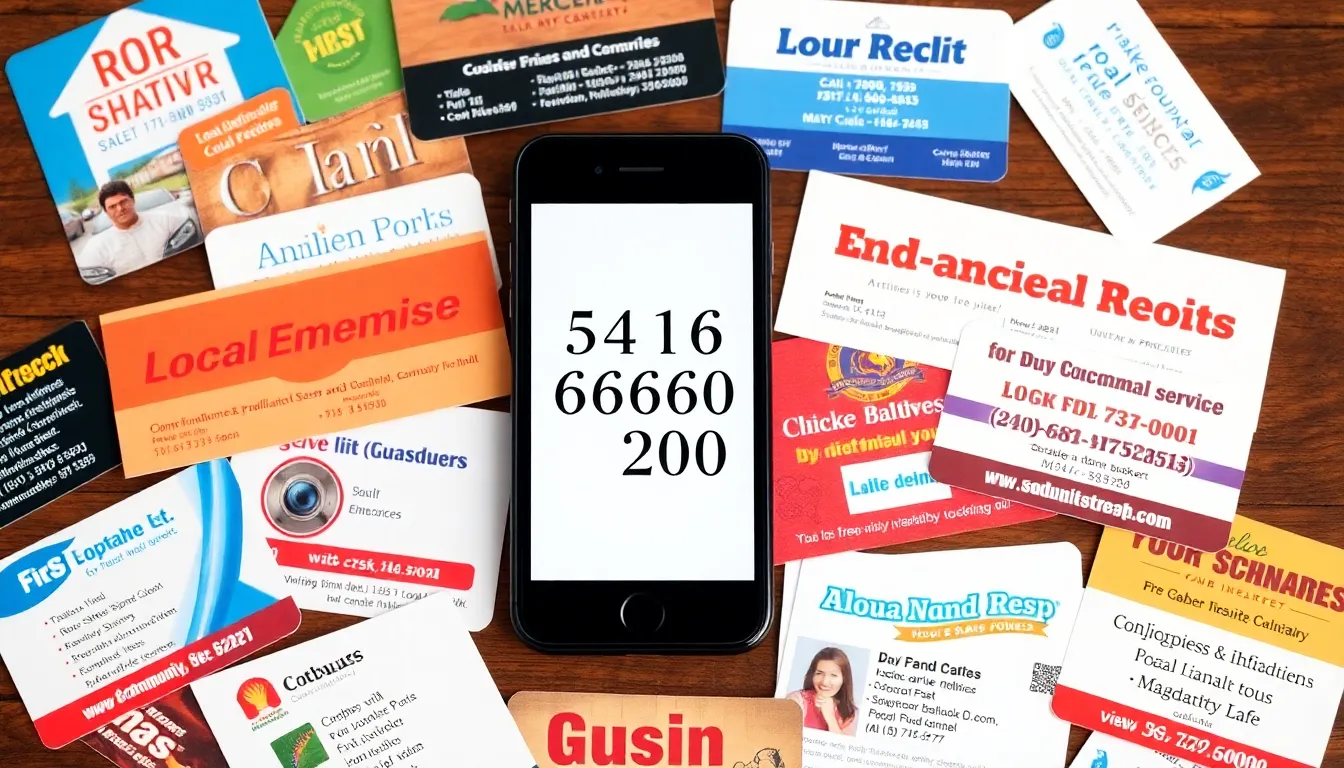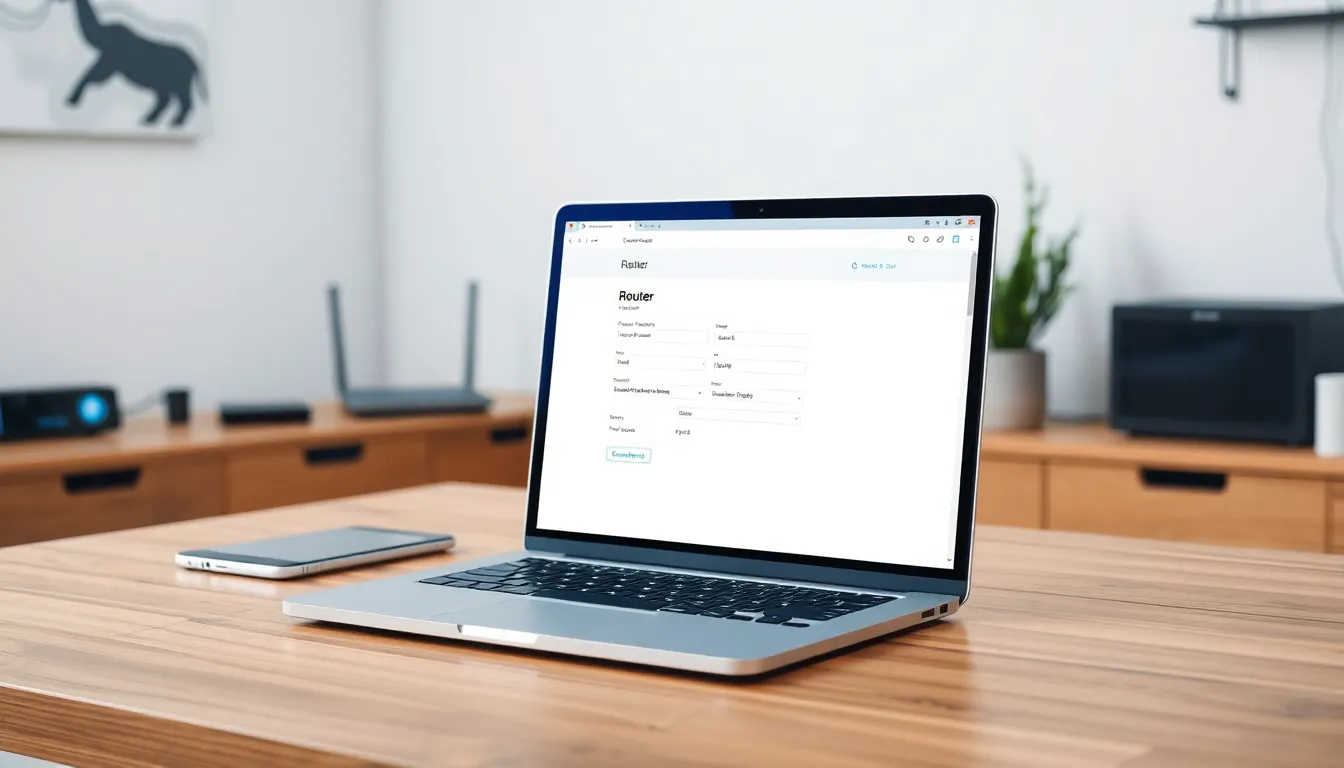Table of Contents
ToggleIn a world where time is money and convenience reigns supreme, mobile procurement platforms are the superheroes businesses didn’t know they needed. Imagine being able to make savvy purchasing decisions from the comfort of your couch, all while wearing your favorite fuzzy slippers. With these platforms, procurement becomes as easy as scrolling through cat memes—just without the guilt trip.
Gone are the days of clunky processes and endless paperwork. Mobile procurement platforms streamline purchasing, making it faster, smarter, and more efficient. They empower teams to collaborate seamlessly, ensuring everyone’s on the same page—even if they’re miles apart. So, if you’re ready to transform your procurement game and make your competitors green with envy, buckle up! The mobile revolution is here, and it’s about to take your business to new heights.
Overview of Mobile Procurement Platforms
Mobile procurement platforms enhance purchasing efficiency and streamline processes for businesses. They offer easy access to procurement functions anytime, anywhere, promoting flexibility. Users can evaluate products and services through intuitive interfaces, resulting in informed decision-making.
Many platforms feature real-time data analytics, allowing teams to track spending and manage budgets effectively. This analytics capability supports identifying trends and optimizing purchasing strategies. Collaboration becomes seamless, as multiple users can engage in discussions and approvals directly through the platform.
Mobile applications often integrate with existing ERP systems, ensuring smooth workflows. Integration enables organizations to maintain consistent data across their operations, minimizing errors and improving compliance. Favorable user experiences lead to higher engagement rates among procurement teams.
Security remains a critical focus for mobile procurement solutions. Advanced encryption and multi-factor authentication protect sensitive information, instilling trust in users. Continuous updates and monitoring fortify the systems against emerging threats.
Organizations adopting mobile procurement platforms have reported notable improvements in productivity and cost savings. Time spent on administrative tasks reduces significantly, allowing teams to concentrate on strategic initiatives. Empowering employees with mobile tools ultimately drives better procurement outcomes.
Numerous vendors offer distinct features, catering to varied business needs. Assessing the options based on functionality, user-friendliness, and support ensures that organizations select the best fit. A robust mobile procurement platform proves invaluable in today’s fast-paced business environment.
Key Features of a Mobile Procurement Platform

Mobile procurement platforms offer essential features that enhance purchasing efficiency and facilitate informed decision-making.
User-Friendly Interface
A user-friendly interface simplifies navigation for all users. Intuitive design allows team members to access procurement functions with ease. Clear categories and search functionalities make product tracking seamless. Customizable dashboards provide quick access to relevant metrics and updates. Mobile compatibility ensures users can manage procurement tasks from any device, enhancing flexibility. Engaging visuals assist users in understanding product details and pricing information quickly.
Real-Time Analytics
Real-time analytics empower users with immediate insights into procurement activities. Detailed reports display spending patterns and budgeting status at a glance. Data visualizations highlight key metrics, enabling teams to identify trends and make strategic decisions. Notifications alert users about overspending or budget thresholds, promoting responsible financial management. Integration with existing systems enhances accuracy, as users can analyze up-to-date information. These insights foster collaboration since team members can jointly evaluate performance and adjust strategies as needed.
Benefits of Using a Mobile Procurement Platform
Mobile procurement platforms offer numerous advantages, enhancing overall procurement strategies. Organizations can streamline processes and improve productivity through various key benefits.
Increased Efficiency
Increased efficiency ranks among the primary benefits of using mobile procurement platforms. Users experience faster purchasing cycles due to simplified processes and intuitive interfaces. Navigating through product catalogs becomes quicker, resulting in reduced time spent on administrative tasks. Team members collaborate seamlessly, discussing approvals and project updates in real-time. Analytics tools provide immediate insights into spending patterns, enabling proactive budget management. Overall, mobile platforms empower users to work smarter, ensuring timely decision-making that drives procurement success.
Cost Savings
Cost savings significantly impact organizations adopting mobile procurement platforms. By reducing time and effort associated with procurement tasks, companies lower operational costs. Advanced data analytics enhance spending visibility, enabling identification of cost reduction opportunities. Organizations also minimize maverick spending through guided purchasing processes that enforce compliance. Better negotiation with suppliers emerges from comprehensive insights on pricing and purchase histories, leading to favorable agreements. Ultimately, mobile procurement leads to sustainable savings, reinforcing financial health while driving strategic growth.
Challenges in Implementing Mobile Procurement
Implementing mobile procurement platforms presents various obstacles that organizations often face. Security concerns arise over data protection, as sensitive information transmitted through mobile devices must be safeguarded against potential breaches. Training end-users on new systems becomes essential, as employees must adapt to different functionalities and interfaces.
Integration challenges with existing enterprise resource planning systems can also hinder successful implementation. When legacy systems don’t align with mobile solutions, organizations experience inefficiencies and data inconsistencies. Change management processes should be enforced to ensure all users embrace the new mobile tools effectively.
Limited connectivity poses another significant challenge. In areas with weak internet connections, access to critical procurement functionalities becomes difficult, impacting workflow efficiency. Addressing this requires organizations to implement solutions for offline access.
Compliance issues might arise during the transition to mobile procurement platforms. Regulatory standards must be considered to ensure that all procurement processes align with industry-specific guidelines. Organizations need to maintain meticulous records to support compliance audits.
User resistance can impact implementation success. Employees may prefer traditional procurement methods, and overcoming this reluctance necessitates effective communication about the benefits of the new system. Providing ongoing support and resources fosters user engagement and buy-in.
Cost factors should also be assessed. While many mobile procurement platforms promise cost savings, initial investments in technology and training can be substantial. Organizations must conduct thorough evaluations to determine the long-term financial impact.
By understanding these challenges, businesses can take proactive steps to overcome them, leading to a successful mobile procurement strategy.
Future Trends in Mobile Procurement
In mobile procurement, several trends are reshaping the landscape. Artificial intelligence (AI) integration increasingly automates routine tasks, enhancing decision-making. Machine learning algorithms analyze purchasing patterns, suggesting optimized supplier options based on historical data.
Blockchain technology also surfaces as a means to improve transparency and security. Organizations can trace the entire procurement process securely, mitigating fraud risks and ensuring data integrity. Many companies are exploring advanced analytics, which provides deeper insights into spending habits, identifying cost-saving opportunities.
User experience remains a focus with the continued development of mobile-friendly interfaces. Businesses prioritize simplicity in navigation to enhance user engagement, making it intuitive for diverse team members. As collaboration becomes vital, platforms enable real-time communication and approval workflows, contributing to faster decision-making.
Cloud-based solutions emerge as a preferred choice, allowing easier scalability and access to features via mobile devices. Remote work capabilities also drive demand for solutions that facilitate procurement from any location. Integrations with popular enterprise resource planning (ERP) systems streamline data sharing, creating a cohesive view of procurement activities.
Furthermore, customization plays a larger role as organizations seek tailored experiences. Users appreciate personalized dashboards that reflect their unique needs and preferences, improving efficiency. Enhanced training resources aid user adoption, ensuring teams maximize platform benefits effectively.
Security enhancements stay at the forefront, with advanced encryption methods and biometric authentication gaining importance. Protecting sensitive data from cyber threats ensures user trust and supports regulatory compliance. Adaptation to these trends positions organizations well to harness the full potential of mobile procurement platforms.
Embracing mobile procurement platforms is essential for organizations aiming to thrive in today’s dynamic business landscape. These tools not only streamline purchasing processes but also enhance collaboration and decision-making across teams. By leveraging real-time data and user-friendly interfaces, companies can achieve significant cost savings and improved productivity.
As businesses navigate the challenges of implementation, focusing on security and user training will be crucial for successful adoption. Future advancements like AI and blockchain promise to further elevate the capabilities of these platforms. Organizations that invest in mobile procurement solutions will position themselves for greater efficiency and competitiveness in their respective markets.





